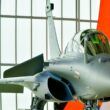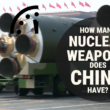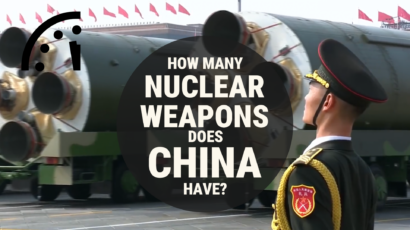Hypersonics are here to stay
By Rajaram Nagappa, July 9, 2015
My roundtable colleague Mark Gubrud argues for a ban on hypersonic missile testing—an unlikely proposition when the pace of hypersonic missile development is only accelerating.
On June 7, China carried out a fourth test of its hypersonic glide vehicle, the WU-14. The vehicle is said to have traveled at Mach 10; the test reportedly involved "extreme maneuvers." China has now carried out four hypersonic tests in a span of 18 months—indicating that Beijing accords great urgency and priority to the development of hypersonic technology.
Russia is developing its own hypersonic glide vehicle, the Yu-71. The three tests conducted since September 2013 (including a test in February of this year) appear to have been unsuccessful, but the Russians possess the technological wherewithal to field a successful hypersonic glide vehicle eventually.
The US military suffered a setback last August in a test of its Advanced Hypersonic Weapon. But the United States has a long history in hypersonic technology development, and last summer's setback will not dampen Washington's plans.
Weapon systems provide true deterrence only when their capabilities are demonstrated through testing. One cannot conceive of circumstances under which nations whose security plans include hypersonic missiles would champion or support a hypersonic missile test ban. To the contrary, they appear certain to conduct testing in order to perfect their technology. After they have perfected it, perhaps a test ban can be discussed.
A look back at the Partial Test Ban Treaty of 1963, which prohibited tests of nuclear weapons in the atmosphere and certain other environments, may be instructive. By the time the treaty was instituted, four nations had already carried out atmospheric tests (the United States, the Soviet Union, Britain, and France). The United States and the Soviet Union had also carried out nuclear tests in space—and gained first-hand knowledge of the disastrous consequences of space testing. Since 1980 no atmospheric tests have been conducted—but the test ban was successfully negotiated only after key nations had demonstrated the reliability of their weapon designs through an adequate number of tests.
Meanwhile, though some nations have conducted tests of kinetic kill antisatellite weapons—and the dangers surrounding such tests are well known—the international community is not working toward a ban on antisatellite weapons. Rather, it is debating codes of conduct, rules of the road, and so forth. Simply put, nations do not generally rush to ban tests of new weapons.
Gubrud's suggestion that the United States, China, Russia, or India might initiate an informal moratorium on testing is a non-starter. Hypersonic technology hasn't yet reached design maturity—unlike nuclear weapon technology in the early 1960s. Therefore it is far-fetched to expect Washington, Beijing, or Moscow to propose a testing moratorium. India's priority will be to reach the testing stage.
Even some nations not currently developing hypersonics will likely, in response to real or perceived threat scenarios, join the fray of hypersonic missile development. Still other nations, though technically incapable of developing hypersonic missiles, would oppose a test ban because they might someday wish to purchase hypersonic missiles, or because they believe they could benefit from the proliferation of hypersonic technology.
With so much destructive power already in existence, the need for hypersonic missiles is questionable. But in the real world, unfortunately, the agenda is driven by powerful and technologically advanced countries. Their agenda tends to be far removed from idealistic notions. Hypersonic missile technology is here to stay—though, as Tong Zhao wrote in Round One, nations planning to develop and deploy hypersonic weapons must "vigorously pursue unilateral steps that will forestall destabilization."
Topics: Nuclear Weapons, Technology and Security
Share: [addthis tool="addthis_inline_share_toolbox"]














